- Matthew Luskin, a researcher at the University of Berkeley at California, has spent much of the last two years examining the indirect ecological impacts of palm oil expansion.
- His work is raising questions about the viability of fragments some palm oil companies are setting aside under their conservation commitments.
- Beyond his findings, his work has resulted in a stunning set of of wildlife photos and videos.
An interview with Matthew Luskin, a part of our on-going Interviews with Young Scientists series.
The direct impacts of converting rainforests and peatlands to industrial oil palm plantations are clear to even an untrained observer: replacing a diverse system characterized by hundreds of tree species with a monoculture annihilates ecological niches, spurring a sharp decline in biodiversity. Less evident are the indirect impacts.
Matthew Luskin, a researcher at the University of Berkeley at California, has spent much of the past two years examining these indirect impacts, including changes wrought by two of the animals that most benefits from oil palm expansion: wild pigs and macaques. While his research is still in progress, so far he has found that both generalist species are further disrupting the ecology of forests that happen to survive the palm oil onslaught. His work is raising questions about the viability of fragments some palm oil companies are setting aside under their conservation commitments.
Reaching these conclusions has involved a lot more than prowling around oil palm plantations and forest fragments. To establish baselines of what’s natural in places where he works, Luskin has spent months trekking through the forests of Sumatra, setting camera traps that reveal little-seen wildlife. Beyond his findings, his work has resulted in a stunning set of of wildlife photos and videos.
Mongabay caught up with Luskin during a November 2015 interview.
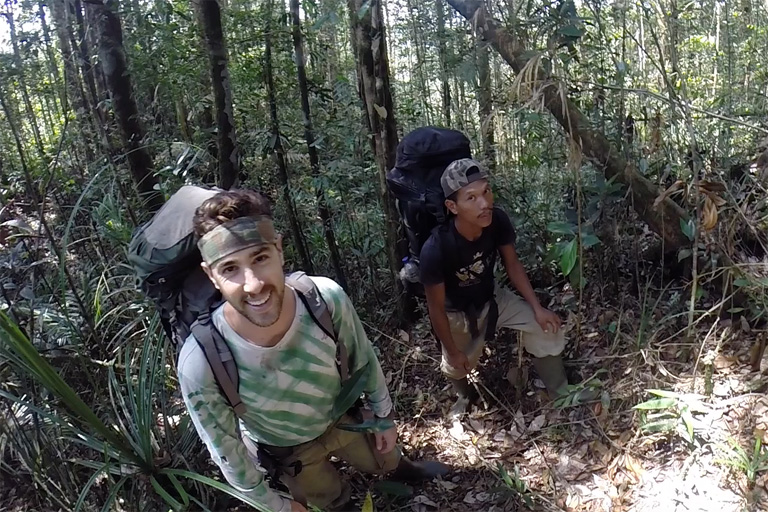
An interview with Matthew Luskin
What is your background and what led you to pursue a career in science?
I was first inspired to become a scientist as a child while living in the rainforest when my family moved to a rural area on the Pacific side of Costa Rica. Being immersed in a steamy jungle and running into sloths and monkeys was a short but formative experience. Later in life it subconsciously pushed me to travel to other rainforests whenever I had saved enough money. A decade later, I had spent almost all of my free time traveling, but it worth every penny because it fostered a deep connection and interest in rainforests. I ultimately decided to pursue a career in science in order to study the jungles I loved most, and I have been pleased with my decision ever since.
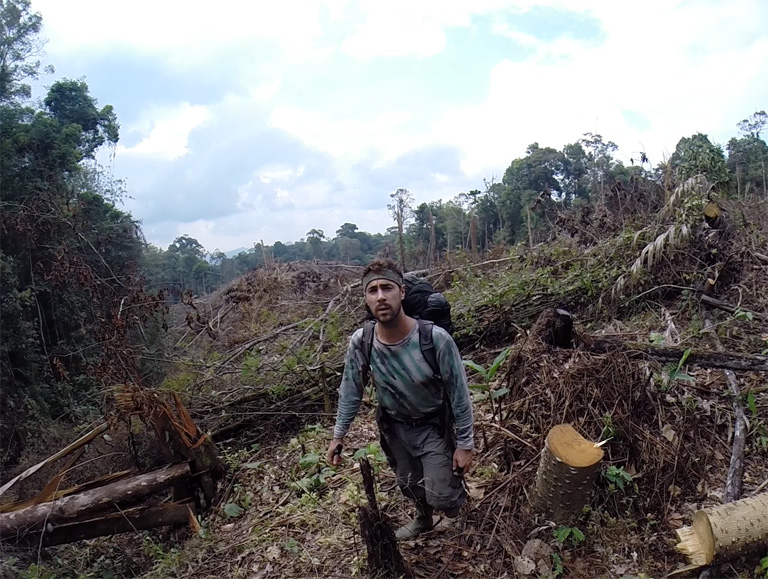
What is your current area of focus in terms of research?
My research program seeks to understand how deforestation, palm oil, and hunting are changing forest wildlife ecology in Southeast Asia. I use an ecology-based perspective to study modern conservation issues and to plan interventions. My primary study sites on the Indonesian island of Sumatra are also home to the world’s highest rates of deforestation. Even though most people would consider working here daunting, it gives me a sense of urgency, excitement, and drive. Most recently I have focused on Sumatran tigers’ importance for predator-prey and food web dynamics. I am using these findings to understand how ecological trophic cascades degrade biodiversity and to plan conservation interventions.
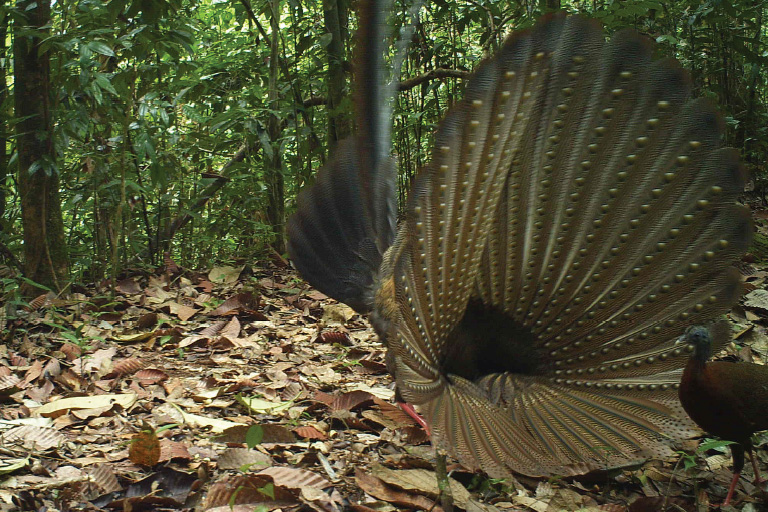

Do you spend much time in the field? And what does a typical day in the field involve?
I have spent over two years living in the rainforests of Malaysia and Indonesia. My last project took me to Sumatra’s three largest national parks for 13 months of extensive camera trapping expeditions. My primary method of studying elusive rainforest animals is to use hundreds of remotely triggered camera traps placed across an entire landscape (500-1000km2). Setting up these cameras required dozens of 2-3 week expeditions into the most remote areas of Sumatra, bringing me up close and personal with all the iconic species I love. These include tigers, clouded leopards, orangutans, siamang, and my forest nemeses, macaque monkeys, whose curiosity invariably leads to stolen and broken equipment.
A typical day begins by waking up at dawn on the ground, sandwiched between two smelly field assistants (I smell no better) and being serenaded by bird songs. Breakfast is invariably white rice with dried fish and chili peppers because there are few food options that can survive 20 days in a humid forest. The highlight is a cup of rich coffee grown in the local village; unfiltered and nearly muddy with thickness, it provides a jolt needed to overcome the incredible soreness. At 8am we break down camp into our 3 huge packs and begin hiking.
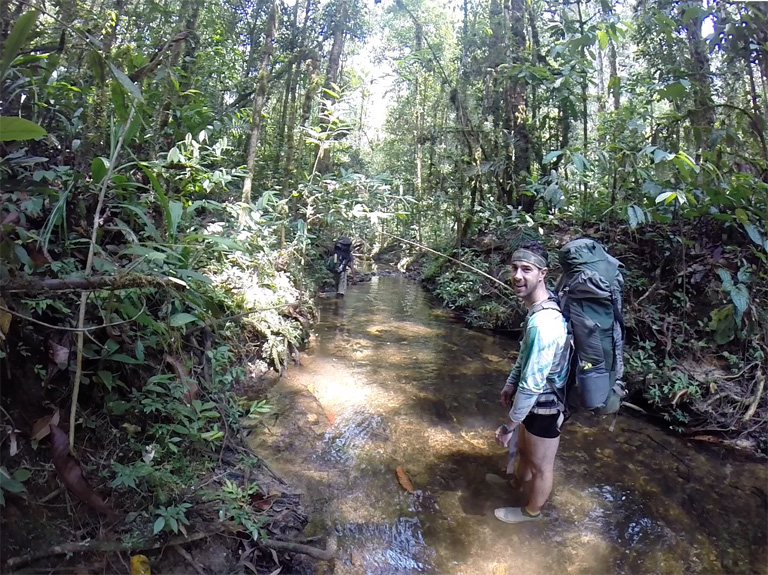
As the leader of an expedition, my focus is on navigating through uncharted forests to pre-selected random locations where we need to set cameras. This requires reading the landscapes for clues such as river size and direction, as well as climbing to lookout points above the canopy in order to avoid cliffs or other obstacles. Every step requires cutting through some vines, lianas, or thorny rattan plants. We constantly maintain our vigilance in order to avoid well-camouflaged snakes or ant and wasp nests. This is a gruelingly slow progress – after hiking four hours we may only have gone 2km (1 mile). Then hiking is made more complicated during the daily mid-morning rains. By lunchtime, the next round of rice and dried fish is substantially more enticing, and we eat on large rocks in a river, one of the only places you’re safe from incessant leach attacks. After a quick swim, we begin cutting our path forward once more, and always finish the day at a stream or river so that we can wash up and have water for drinking and cooking. For shelter, we simply stretch a large tarp between trees, and lay another underneath to sleep on. We build a small fire (usually aided by a dash of gasoline) in order to prepare our rice and dried fish dinner, which never gets old. Finally, the two or three other men and I sit around the fire and relax. Communication can be difficult because the people primarily speak their local ethnic groups’ dialect. We end up speaking Indonesian, which is all of our second or third languages. The first 10 days are spent getting to know one another; the last 10 days are spent telling stories. Over the cacophony of cicadas, we compare our respective cultures and share stories of the forests.

My favorite part of the day is to review the photos captured by previous camera traps. As I pop in a memory card and the other men hear the ‘ding’ that was read, they stop what they’re doing and crowd around the small screen. “Looking through camera traps is like a box a chocolates, you never know what you’re gonna get.” As we flip through the photos, there’s always a hundred (or thousand) photos of a single animal taking a nap, or a troop of macaque monkeys hard at work trying to rip a camera off it’s place or chew through the straps. We laugh when the monkeys are caught mating (“membuat porno!” the men howl with laughter) and we squirm when porcupines do the same (“pelan-pelan hati-hati” [slowly, carefully] they giggle). Then, as if being hit by a cold strong wind, we are pushed back and each man lets out a low “oooohhhh” – the mere sight of a large tiger male on the tiger takes everyone aback. We check the photo’s time stamp: he was here just three days ago… sleep will not come easily tonight.
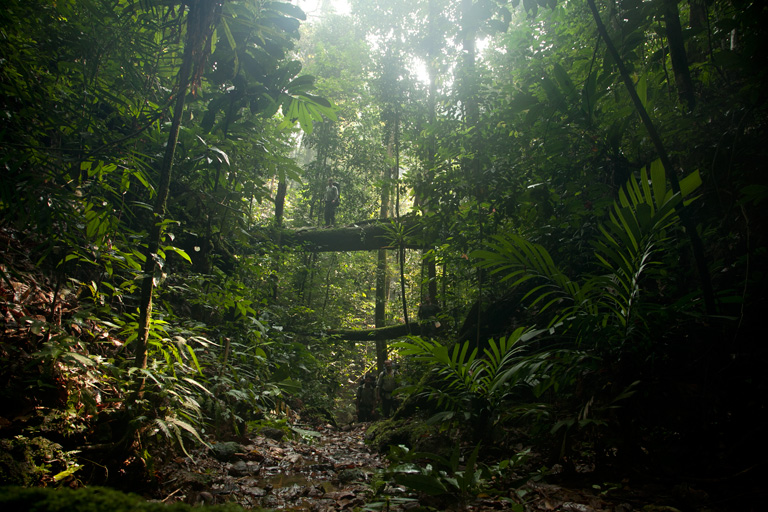
How might wildlife species use palm oil plantations? Are there “winners”?
I actually began my dissertation wondering this same question, so I did an in-depth habitat analysis of different plantations that now cover Southeast Asia’s lowlands and examined which wildlife species’ tracks I found. The results revealed that even though plantations eventually have closed tree canopies, they are still primarily used by just a few wildlife species, namely wild boars and macaques.
My next step was to examine whether wild boars and macaques’ use of farmland (crop raiding) increased their abundances in nearby forests where they lived. This was done using a large number of camera traps placed in forests near and far from palm oil plantations. I also monitored female wild boars’ breeding by counting their birthing nests, which mothers make from large piles of tree seedlings and saplings. The results resoundingly show that the local abundance of wild boars and macaques were 10-20 times higher near plantations than natural forest. Clearly, these are our “winners,” but my next thought was that these boars could mean a lot of bacon for tigers!
To test if wild boar and macaque prey might be drawing tigers toward plantations and even supporting higher tiger populations, I again used a large network of camera traps placed near and far from plantations. Unexpectedly, Sumatran tigers did not preferentially track the abundant prey near plantation edges. This is due to heavy tiger poaching Sumatra, such that tigers that come near plantation edges are more likely to be killed.
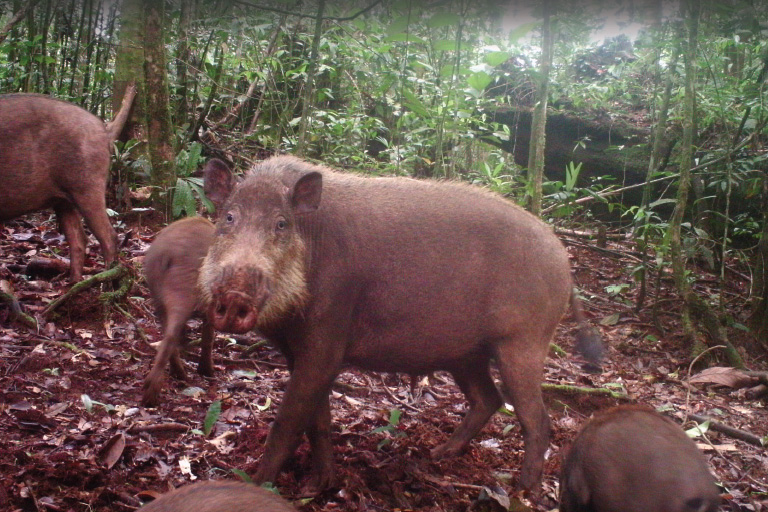
Is hunting an issue for forest animals living near plantations?
Definitely. Subsistence hunting for meat and poaching wildlife for medicine occurs throughout Southeast Asia. Based on my earlier results, I thought that people living near palm oil would hunt the plentiful wild boars and macaques for meat. However, this turned out to be narrow-minded, as I grew up in California where hunters prize wild boar meat. On the contrary, people from Sumatra and Peninsular Malaysia are predominately Muslim and follow a strict Halal diet that forbids pork. The paradox of having plentiful wild meat available without anyone to consume it intrigued me.
To better understand the local human-wildlife relationships in my field sites, I organized an interview-based study of local hunting patterns and wild meat consumption. The results were surprising: Muslim farmers actually do hunt wild boars and macaques, but only to stop them from crop raiding. Meanwhile, Chinese people from the cities who eat pork have now started hunting. In fact, they have developed new methods of herding and netting large numbers of wild boars from within plantations. This method of hunting produced little by-catch of other animals and provided management of overabundant wild boars pests: a rare win-win for conservation.

How might oil palm plantations impacts the wildlife communities surrounding forests?
Wild boars and macaques are some of the most destructive species on earth, degrading forest vegetation and eating all sorts of small animals like lizards, frogs, and even the eggs and young of ground-breeding species. Wild boars and macaques further aggressively outcompete other species like muntjac and mouse deer, but also indirectly outcompete them by consuming their food (ecologists refer to this latter form of reducing available resources as “exploitative competition”). Since wild boars and macaques have broad omnivorous diets and can eat up everything in their path, this reduces the survival of other wildlife species.
And what does that mean forest reserves that have been set aside by plantation companies in accordance with the Roundtable for Sustainable Palm Oil (RSPO) policies?
The degradation of forest edges means that small reserves will be ineffective at preserving healthy wildlife communities. In actuality, what are created to be “High Conservation Value” (HCV) forests by palm oil companies, I now call “pig and macaque farms.” Instead of setting aside small reserves, my research supports the protection of larger continuous blocks of forest as the only way to maintain food webs and properly functioning ecosystems. There are now ambitious projects to move sustainability certifications to the landscape scale, such as in the state of Sabah, Malaysian Borneo, and these hold more promise for achieving larger protected forests that meaningfully contribute to long-term wildlife conservation.

Does this also apply to riparian zones?
Riparian zones’ can help maintain healthy waterways for both aquatic species and people. For these purposes, I absolutely support maintaining forests adjacent to rivers, and there is a small co-benefit from riparian forests if they function as corridors of wildlife movement. However, riparian zones often contain hyper-abundances of wild boars and macaques that degrade the forest and cause damage to agriculture. Thus, riparian forests alone are not going to contribute significantly to wildlife conservation, and so should be promoted separately from wildlife conservation.

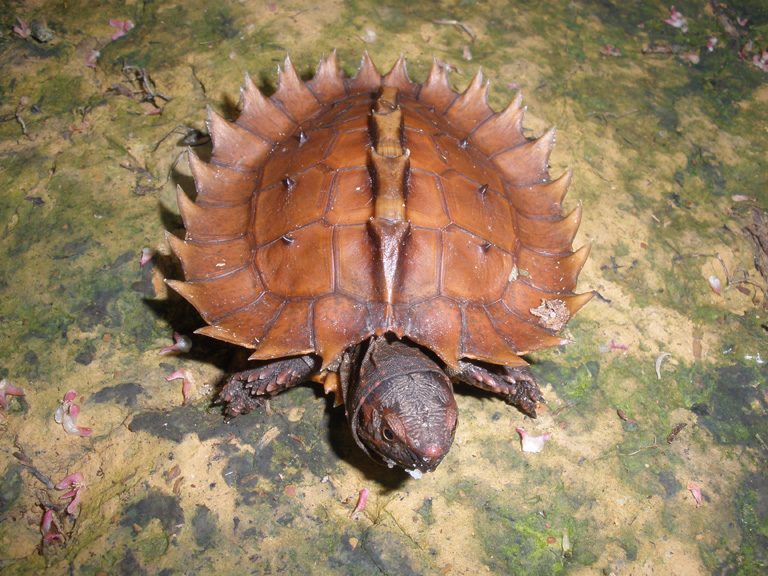
How has the socio-economic changes accompanying palm oil affected wildlife?
There has been widespread poverty alleviation and urbanization in the landscapes where I work as a direct result of palm oil development and profits. For example, the rates of children’s schooling have increased and there is better access to health care. In my research, I found that these changes have generally reduced demand for wild meat, lowering per capita wildlife harvest. However, when wildlife becomes a luxury good then higher incomes can actually lead to more demand and more harvest. One example from Sumatra is the bird trade, which are kept for their songs in nearly every house. The capture of Sumatra’s birds for this purpose has become unsustainable, to the point where some forests are nearly devoid of the playful avian noises that are a trademark of most rainforests.
Do your findings figure into the Sumatra’s current fire crisis?
The current haze crisis is driven by fires in plantations that often burn through small remaining forests, such as HCV forests and riparian forests. This is another reason why conservation efforts should focus on larger forests that are more resilient to fires.

What’s next for you?
I’m finishing my PhD this year and applying for postdocs to continue my research. My new focus will be on understanding the cascading impacts onto trees. For example, there are now 10-times more wild boars in forests near palm oil- how will this change the tree community? I have many hypotheses based on which tree species’ seeds wild boars prefer to eat (kill), which ones they might disperse. I am also looking at which seedling species wild boars use in their birthing nests because these may also be disproportionally affected. The method I am primarily using to study this is fenced wildlife exclosure experiments in the middle of the rainforest. Next year I plan to analyze the results on tree reproduction.


Do you have any tips for students who are considering a career in science?
My advice would be to keep a list or journal about different career options you are considering. I have found that writing down why you want a particular career, or its drawbacks, can make your choice seem obvious. The next step is to ask your personal heroes what they enjoy and dislike about their jobs, or if they could do it all over again, how might they change? I still do this today when talking with professors, researchers, NGO leaders, and other people I identify as having interesting careers.
In terms of being a scientist, the best part for me is that I am free to develop and follow new and evolving interests- this keeps me from getting bored! One negative side is very [very] low pay and extreme competition for suitable jobs. Another complication is needing to move cities (or countries) three or four times to take those rare jobs. That strains relationships and makes it difficult to start a family. A final bright point is the personal fulfillment associated with working towards something interesting, valuable to society, or progressing science in some way.













